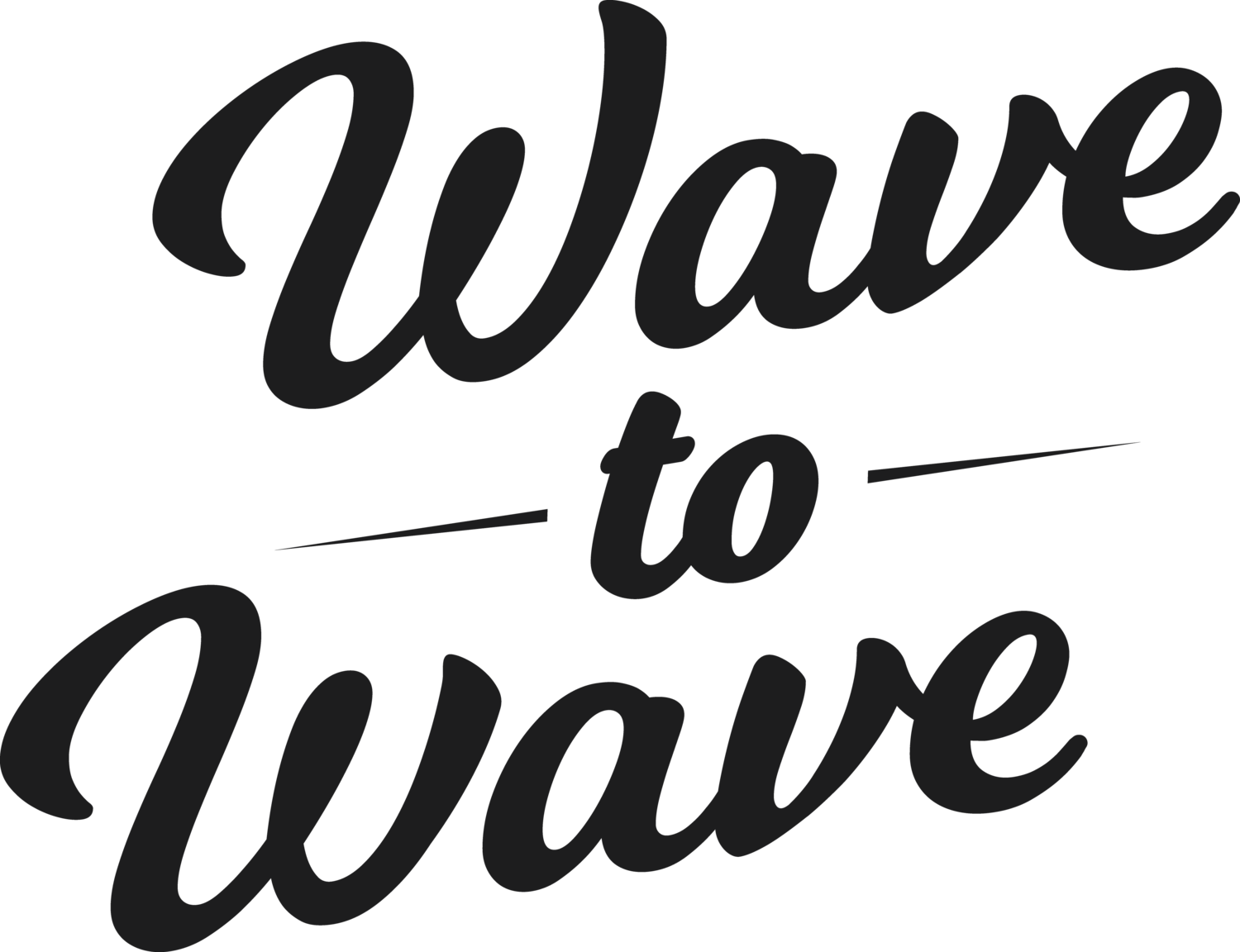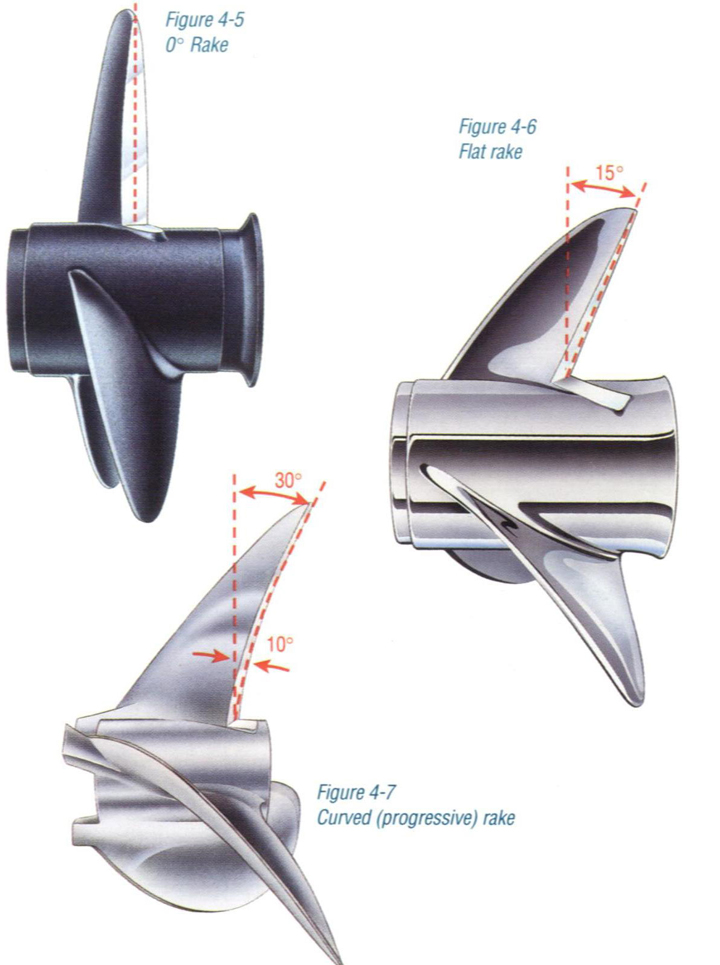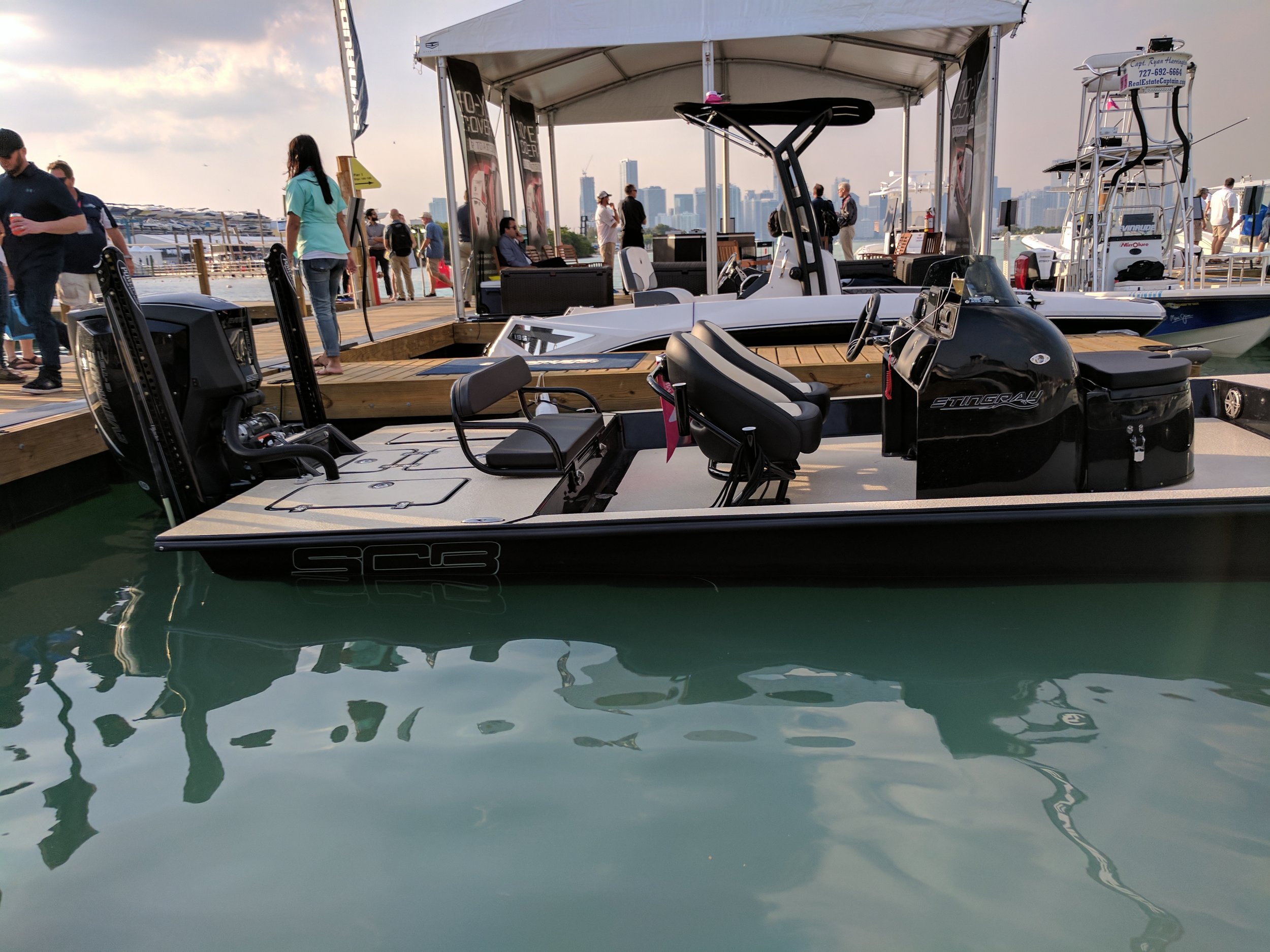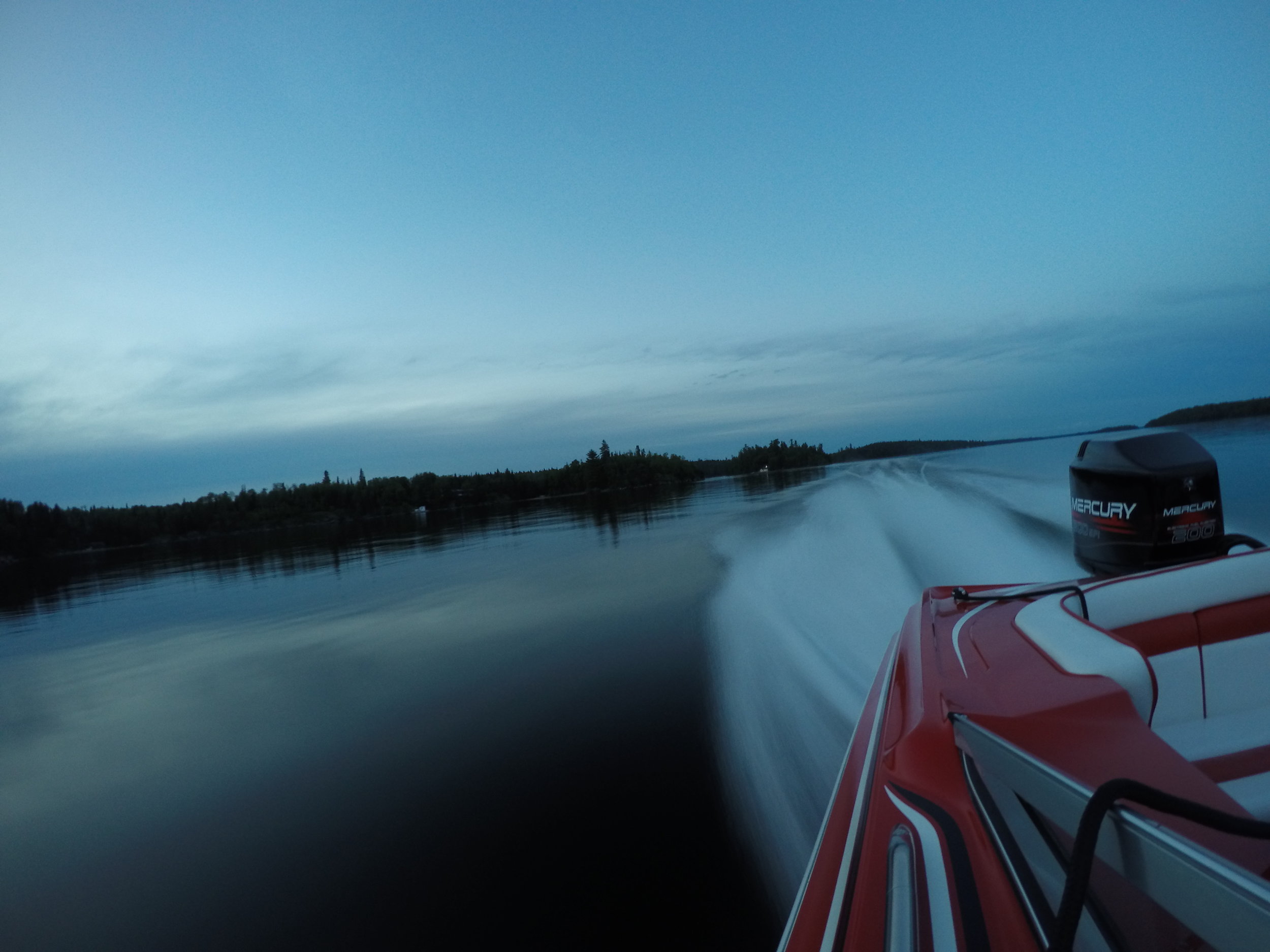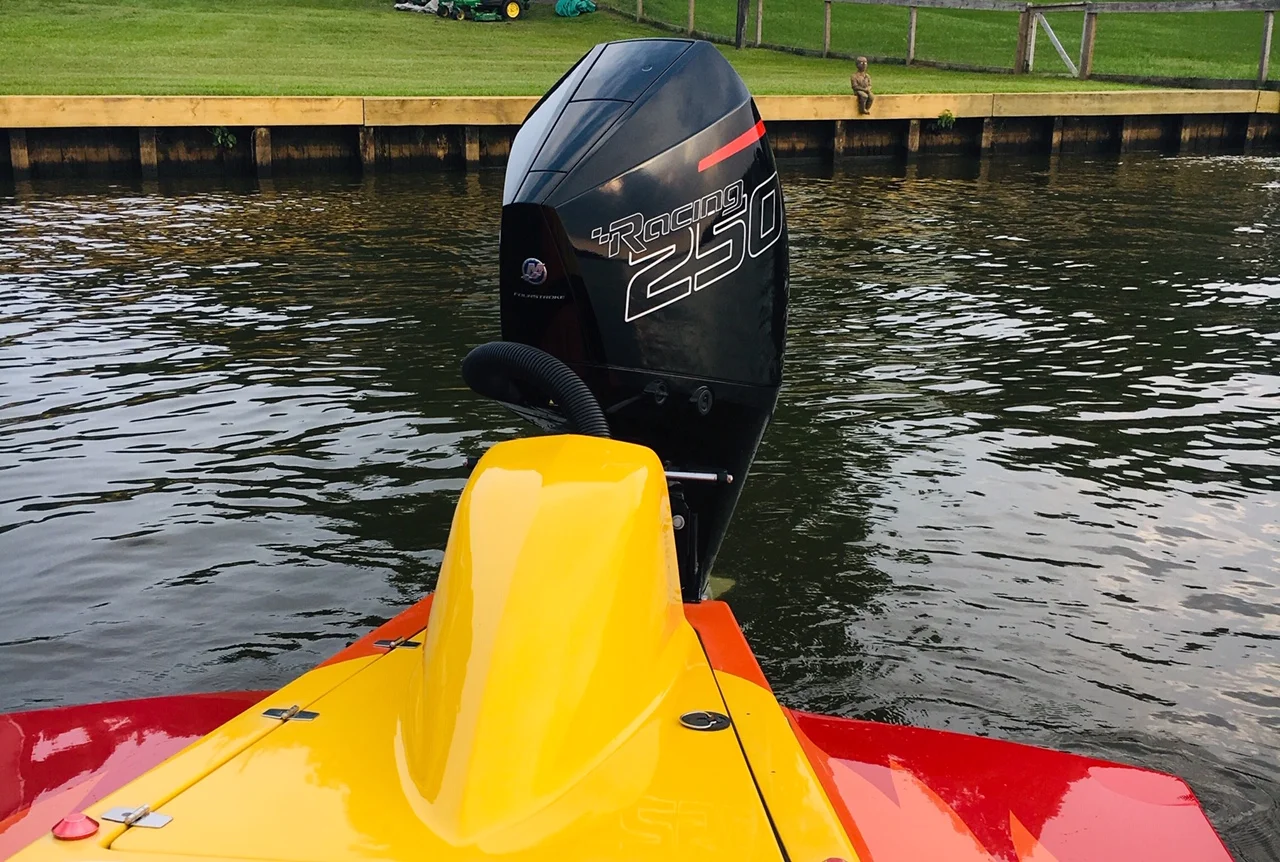Big Wheels Can Slow You Down
Propellers are one of the most critical pieces of how your boat performs. The wrong prop can make your boat inefficient, slow and handle poorly. This article is not an all encompassing piece on props, rather it is a few thoughts about which prop to use, particularly on big outboards. I will focus on diameter and rake mostly as there are a couple misconceptions about those details.
Rake
The rake is a critical factor in how your prop performs, particularly in providing lift.
These days there are some great options from the popular manufacturers like Mercury Racing, BRP and the smaller prop makers like Hering, Spinelli, Hydromotive and a few others. Unless you are running a unique setup that has very specific requirements, there is a really good chance you can find something off the shelf that will work extremely well; especially if you’re running a stock outboard on a conventional performance hull. Mercury Racing has so many options now, they have half inch pitch increments for some of their popular props. With adjustable venting systems you can really dial in your prop no matter how finicky your hull is.
One thing I see a lot in boat forums in respect to some of the newer, more powerful outboards, 250+ HP like the Evinrude G1 and G2 250 HO, big Yamaha’s as well as the 3.0 / 3.2 litre Mercs is that they need big diameter props. This is not necessarily true and too general of a thing to say. When choosing a prop, it has a lot to do with your hull and how you’re using it, rather than the engine itself. With big torquey outboards on heavy bass boats or center consoles then it would be generally true that having a larger diameter prop is going to be better overall. In the case of a medium to lightweight performance vee hull, I would consider a few other things before going with the conventional wisdom of larger diameter props on big outboards. Here’s why.
Beautiful SCB Stingray, light, air entrapment hull. Not much lift needed. 1,200 lbs.
There is a difference between blade area and diameter. On top of that, the rake of the propeller will be more of a determinant of how much water the prop will carry running at an elevated transom height. High rake, 3 blade props can do a great job of lifting the bow while running high as opposed to the stern lift you might experience running a comparable 4 blade prop. The advantage being a 3 blade with more rake and more blade area is going to carry water, while reducing drag, often resulting in a better top speed. In the case where you don’t need as much bow lift or you find it smoother running at high speed, then a 4 blade with a higher rake and the right cupping might perform better than a 4 blade with a larger diameter. More diameter doesn’t necessarily mean better when you are running your engine high at high speeds, in fact some will not carry enough water, resulting in too much slip, slowing you down. Conversely, super light weight boats that don’t need bow lift consequently will not need a high rake prop that many vee pad hulls do.
If you’re bogging down because your prop can’t break free or you can’t squeeze more speed out of it at the top end, then you may have to look at trying a prop with more rake and less diameter. Keep in mind, if you’re going from a 3 blade to a 4 blade, you can probably raise your engine height .5 to 1 inch higher, while gaining some RPM (50 to 75), offsetting the potential RPM loss of changing props with a higher pitch, different cupping or more rake. As a general rule, every 1 inch you elevate your engine, you might gain up to 100 RPM and for every 1” of pitch up or down, you might lose or gain 100 to 200 RPM, respectively, depending on the prop. If you’re going from a larger diameter 4 blade to a smaller diameter 4 blade, you may want to lower your engine slightly and adjust it up from there for optimal performance and safety reasons.
Safety
Consider your engine height and setback when changing props.
Many popular 3 and 4 blade props for big outboards range in diameter from 13.75” to 15.25”. Generally, if the diameter is lower, consider the rake of the prop and blade area to determine how it might work in your application and if you might need to adjust your engine height and pitch. Boats in the 21 foot range, with 250+ HP, where the hull weighs less than 1500 lbs. are medium to lightweight and would probably do best with suitable props in the 14” to 14.75” range. In the 200 HP range you may do well with an even smaller diameter, 13.75” to 14.5”, depending on the hull.
Test
Test as many props as you can. Bigger is not always better.
Remember, props are very nuanced. There are many variables and everyone has preferences for how they want to run. Getting the chance to test them in the real world is the best way to dial your boat in. If you can find your exact boat and engine combo on a forum, that can be a good place to start but definitely try yourself. Be cautious of buying used props that have been “worked” or repaired. With so many options, you can probably find something out of the box that will work. I have seen used props on forms for sale with “nicks” and “chips,” avoid these as they might end up costing you more in the end.
Some ultra light boats don't need bow lift at all, less rake can provide more push in this case
Here are some great resources to help with finding the right prop.
Mercury Racing prop slip calculator and prop school articles. Plus in the comment section you can see responses from Mercury Racing’s Scott Reichow, which is very informative.
http://www.mercuryracing.com/prop-slip-calculator/
http://www.mercuryracing.com/prop-school-part-1-introduction/
Aero Marine Research. Good resource for propeller information, hull designs and performance tips:
http://www.aeromarineresearch.com/
Quicksilver's book, Everything You Need to Know About Propellers is excellent as well.
